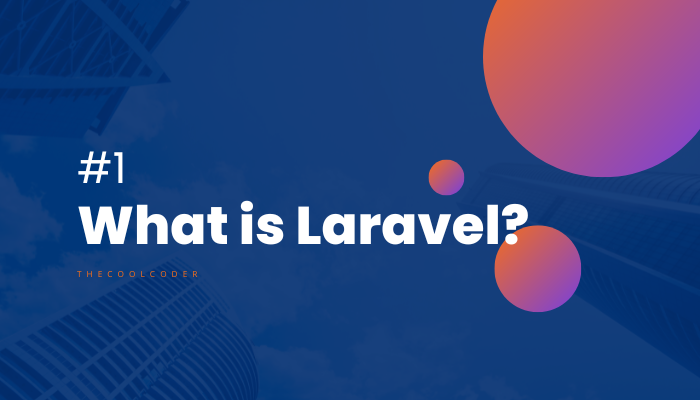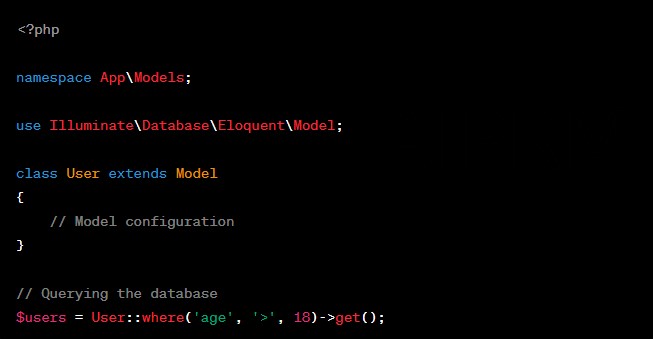 In the world of web development, Laravel has emerged as one of the most popular PHP frameworks. It offers a robust and elegant solution for building web applications and APIs. Laravel simplifies the development process by providing a clean and expressive syntax, along with a wide range of features and tools that boost productivity. In this article, we will explore the ins and outs of the Laravel framework, its key features, and how it revolutionizes PHP development.
In the world of web development, Laravel has emerged as one of the most popular PHP frameworks. It offers a robust and elegant solution for building web applications and APIs. Laravel simplifies the development process by providing a clean and expressive syntax, along with a wide range of features and tools that boost productivity. In this article, we will explore the ins and outs of the Laravel framework, its key features, and how it revolutionizes PHP development.
History of Laravel
Laravel was created by Taylor Otwell in 2011 with the aim of providing an alternative to the existing PHP frameworks. Inspired by other frameworks like Ruby on Rails and Sinatra, Laravel was designed to be developer-friendly and promote code simplicity. Since its inception, Laravel has undergone several major releases, introducing new features and improvements with each version.
Key Features of Laravel
Laravel offers a plethora of features that make it a preferred choice for PHP developers. Some of the key features include:
- Elegant Syntax: Laravel emphasizes readable and expressive code, making it easier to understand and maintain.
- MVC Architecture: Laravel follows the Model-View-Controller (MVC) architectural pattern, which separates application logic from presentation, resulting in cleaner code and better organization.
- Routing System: Laravel provides a powerful routing system that simplifies the definition of application routes and URL endpoints.
- Blade Templating: With Blade, Laravel’s lightweight and intuitive templating engine, developers can create reusable and dynamic views with ease.
- Database Interaction: Laravel’s Eloquent ORM offers a convenient way to interact with databases, allowing developers to work with database records using expressive syntax and relationships.
- Authentication and Security: Laravel provides built-in authentication and security features, including user authentication, authorization, and protection against common security vulnerabilities.
- Caching and Optimization: Laravel offers caching mechanisms to improve application performance by reducing database and file system access.
- Error Handling and Logging: Laravel simplifies error handling and provides robust logging capabilities, making it easier to debug and monitor applications.
- Testing Support: Laravel comes with a comprehensive testing suite, allowing developers to write unit tests and perform automated testing to ensure the stability of their applications.
Installation and Setup
To start developing with Laravel, you need to set up your development environment. Some steps here to install Laravel:
1. Step 1: Install Composer: Laravel utilizes Composer, a dependency management tool for PHP. Install Composer on your system by following the official documentation.
2. Step 2: Install Laravel: Once Composer is installed, you can create a new Laravel project by running the following command in your terminal: “composer create-project –prefer-dist laravel/laravel project-name”

3. Step 3: Serve the Application: Laravel provides a built-in development server. Start the server by running the following command: php artisan serve
MVC Architecture in Laravel
Laravel adheres to the architectural pattern known as Model-View-Controller (MVC), which effectively segregates an application’s logic, data, and presentation components. This separation allows developers to maintain a clear and organized codebase.
The MVC architecture in Laravel can be summarized as follows:
- Model: The Model represents the data and business logic of the application. It interacts with the database and performs CRUD (Create, Read, Update, Delete) operations.
- View: The View is responsible for rendering the user interface. It receives data from the Controller and presents it to the user.
- Controller: The Controller acts as an intermediary between the Model and the View. It processes user requests, retrieves data from the Model, and passes it to the View for display.
Routing in Laravel
Routing defines how the application responds to different HTTP requests. Laravel provides a simple and expressive syntax for defining routes. Here’s an example of defining a basic route in Laravel:
Route::get(‘/hello’, function () { return ‘Hello, Laravel!’; });
In the above example, when a GET request is made to /hello, the closure function is executed, and the response ‘Hello, Laravel!’ is returned.
Views and Blade Templating
Views in Laravel are responsible for rendering the HTML content that is sent back to the user’s browser. Laravel’s Blade templating engine provides an elegant way to create dynamic and reusable views.
Here’s an example of using Blade to display a dynamic variable in a view:

In the above example, the {{ $name }} syntax is used to output the value of the $name variable in the view.
Database Interaction with Eloquent ORM
Laravel’s Eloquent ORM offers developers a straightforward and expressive approach to interacting with databases, making database operations more intuitive and streamlined. It allows you to work with database records using PHP objects and provides convenient methods for querying and manipulating data.
Here’s an example of defining a model and querying the database with Eloquent:

In the above example, we define a User model that extends the Model class provided by Laravel. We can then use the User model to query the users table in the database.
Authentication and Security
Right from the start, Laravel offers a comprehensive authentication system that is readily available and fully functional. It includes features like user registration, login, password reset, and email verification. Laravel’s authentication system is highly customizable and allows developers to define their own authentication rules and logic.
Laravel also takes security seriously and provides built-in protection against common security vulnerabilities, such as cross-site scripting (XSS), cross-site request forgery (CSRF), and SQL injection.
Caching and Optimization
Caching plays a crucial role in improving application performance. Laravel offers various caching mechanisms, including file caching, database caching, and in-memory caching using popular caching systems like Redis and Memcached.
By caching frequently accessed data or expensive database queries, Laravel reduces the load on the server and improves response times. Additionally, Laravel provides optimization tools and techniques to further enhance application performance.
Error Handling and Logging
Properly managing errors is a crucial aspect of every application’s development and operation. Laravel simplifies error handling by providing a unified API for logging and reporting errors. The framework includes robust logging capabilities, allowing developers to record and monitor application errors and exceptions.
Laravel’s logging system supports multiple log channels, allowing you to configure different log outputs, such as files, databases, or external services.
Testing in Laravel
Laravel places a strong emphasis on testing. The framework provides a comprehensive testing suite, including support for unit testing, integration testing, and functional testing.
Developers can write tests to ensure that their application behaves as expected and to catch any regressions or bugs introduced during the development process. Laravel’s testing tools make it easy to write test cases and perform automated testing.
Laravel Community and Ecosystem
Laravel has a vibrant and supportive community. The official Laravel website provides extensive documentation, tutorials, and guides to help developers get started with the framework. The community actively contributes packages and extensions to the Laravel ecosystem, making it even more powerful and versatile.
The Laravel ecosystem includes popular packages like Laravel Nova (admin panel), Laravel Horizon (task scheduler), Laravel Passport (API authentication), and many more. These packages extend Laravel’s functionality and provide additional features that can be easily integrated into Laravel projects.
Conclusion
Laravel framework has revolutionized PHP development by providing an elegant and efficient solution for building web applications and APIs. With its rich set of features, developer-friendly syntax, and strong community support, Laravel has become a top choice for PHP developers worldwide. Whether you’re a beginner or an experienced developer, Laravel empowers you to create robust and scalable applications with ease.
Frequently Asked Questions (FAQs)
- Q: Is Laravel suitable for large-scale applications?
- A: Yes, Laravel is suitable for large-scale applications. It provides scalability, and performance optimization, and supports modular development.
- Q: Can I use Laravel for building RESTful APIs?
- A: Yes, Laravel has excellent support for building RESTful APIs. It includes features like route prefixing, request validation, API resource routing, and serialization.
- Q: Does Laravel support caching?
- A: Yes, Laravel supports various caching mechanisms, including file caching, database caching, and in-memory caching using Redis or Memcached.
- Q: How can I contribute to the Laravel framework?
- A: You can contribute to Laravel by reporting issues, submitting bug fixes, or proposing new features on the official Laravel GitHub repository.
- Q: Is Laravel suitable for beginners?
- A: Yes, Laravel is beginner-friendly and has a gentle learning curve. The documentation and community resources make it easy for beginners to get started.